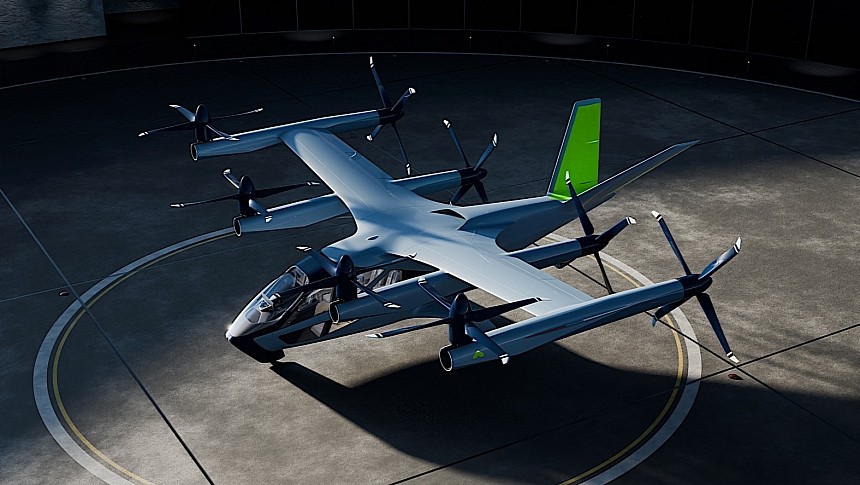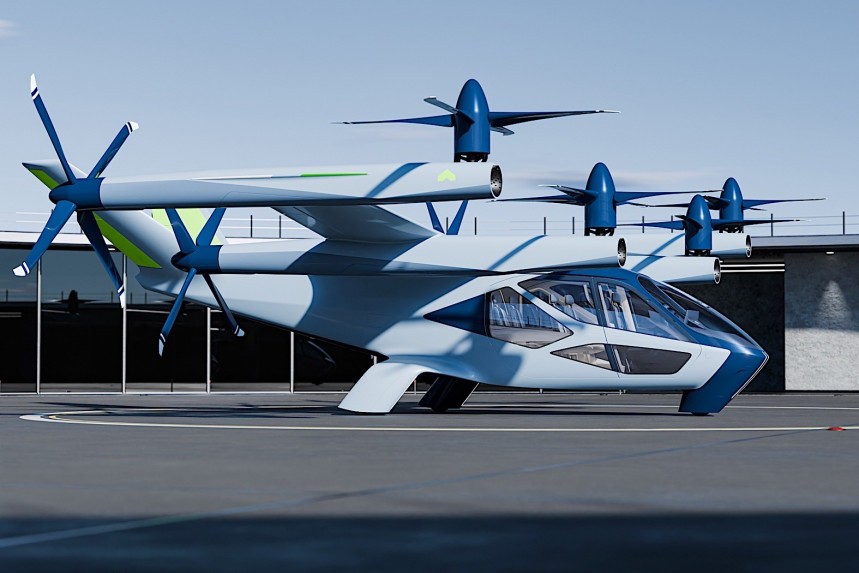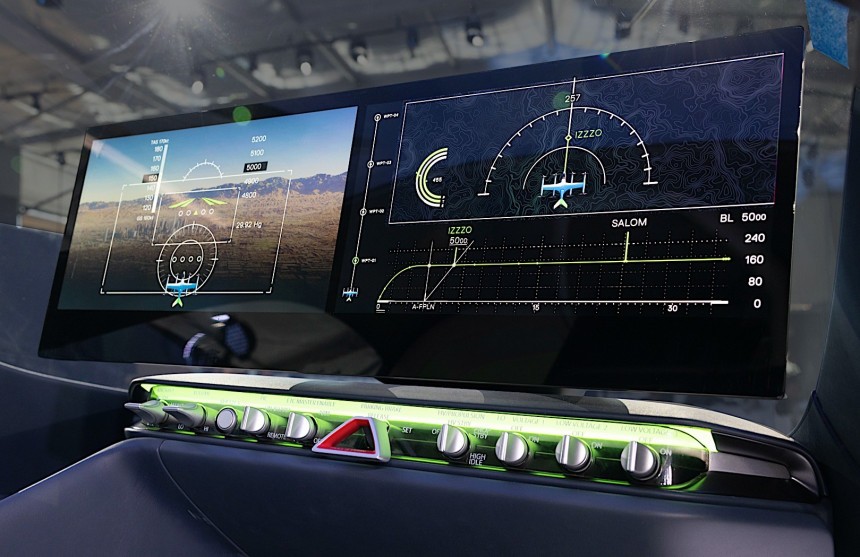I remember when I first watched "The Fifth Element" many, many years ago. I was simply mesmerized by the idea of having flying cars moving about in the skies above our cities. To me, it was a future so far-fetched and insane that I was convinced it would not come to pass anytime soon.
Yet here we are, on the verge of a literal revolution in transportation. No, I am not talking about the rise to power of the electric vehicle, but about the emergence of vertical takeoff and landing (VTOL vehicles).
They are not exactly flying cars, true, but they're close enough, and more importantly than that they seem like such a feasible idea that it has drawn in the automotive industry's greats, several of which have already set up special businesses to handle VTOL development.
Hyundai's business is called Supernal, and it just stole the headlines with the unveiling of something called the S-A2. It's a VTOL of the electric variety that, industry-willing, might soon ferry people around, shortening the duration of trips and helping beat congestion.
The design is at the time of writing just a concept, and it's on the floor of the CES 2024 event in Las Vegas, Nevada. It comes as a machine capable of carrying a pilot and a total of four passengers, more than enough for it to successfully function as a taxi, or corporate air vehicle, or even a family ride in the sky.
The VTOL is an evolution of the S-A1 Supernal unveiled at the same CES event four years ago. Just like that one, it blends the expertise Hyundai has in designing cars with new ideas from the aerospace realm.
If you look at the thing's specs you might not feel all that impressed, but you do have to take into account this machine is meant to fly, not drive on the road, and up there all the numbers get an entirely different meaning.
The aircraft has been designed to operate under the power provided by a distributed electric drivetrain, whose exact specifications were not shared. The battery of the VTOL, of an undisclosed capacity, is there to power no less than eight electric motors, which in turn spin an equal number of rotors. All of them are of the tilting variety, allowing the VTOL to lift off like a helicopter and then transition to horizontal flight.
And now about the numbers I mentioned earlier. The S-A2 will be able to travel at speeds of up to 120 miles per hour (193 kph), which as far as VTOLs go is quite a lot. The maximum altitude the aircraft will be able to reach is 1,500 feet (457 meters), and that's higher than most other designs out there too.
Supernal doesn't specifically say what range the VTOL will have, but it does say it will, at least at first, be envisioned as a tool to travel short distances, of between 25 and 40 miles (40 to 64 km).
That's under the range of what others are promising, but more than enough for city operations. What's more important is that the company aims to make the aircraft upgradable, and it could receive more potent batteries in the future that should give it a better range.
Design-wise the S-A2 is one of the most eye-pleasing such designs we've ever seen – you can clearly see Hyundai's touch in shaping the aerial ride. The aircraft looks massive and intent, with the cabin pushed forward to form an aggressive snout, with massive wings to each side making it look like a bird of prey in flight, and a V-tail that makes it appear like a killer drone.
The interior is minimalistic, some could even say simplistic, with the pilot seated up front and the four passengers on two separate rows behind him. The interior has been imagined with modularity in mind, so what we see here is just a taste of how things could look like.
The images showing what the dashboard of the aircraft looks like are impressive, with the pilot allowed to use big screens to get all the info he needs. Throughout the cabin the company behind the design used widows and light to make the interior look significantly roomier than it actually is.
Supernal says the S-A2 has been designed to be safe and quiet. Aviation-grade materials can be found all around, including in the seat frames, there are redundancies for every critical system of the aircraft, and its sound levels while in operation should not exceed those of your average washing machine: up to 65 dB when taking off and landing.
Hyundai seems determined to make the S-A2 (or, more precisely, its successors) a reality of our time. The company says it plans to reach all of the required safety levels by 2028, when a market entry for the VTOL is to be expected. It's unclear yet where production will take place, but the carmaker says Supernal will be allowed to make full use of Hyundai's mass production capability.
They are not exactly flying cars, true, but they're close enough, and more importantly than that they seem like such a feasible idea that it has drawn in the automotive industry's greats, several of which have already set up special businesses to handle VTOL development.
Hyundai's business is called Supernal, and it just stole the headlines with the unveiling of something called the S-A2. It's a VTOL of the electric variety that, industry-willing, might soon ferry people around, shortening the duration of trips and helping beat congestion.
The design is at the time of writing just a concept, and it's on the floor of the CES 2024 event in Las Vegas, Nevada. It comes as a machine capable of carrying a pilot and a total of four passengers, more than enough for it to successfully function as a taxi, or corporate air vehicle, or even a family ride in the sky.
The VTOL is an evolution of the S-A1 Supernal unveiled at the same CES event four years ago. Just like that one, it blends the expertise Hyundai has in designing cars with new ideas from the aerospace realm.
If you look at the thing's specs you might not feel all that impressed, but you do have to take into account this machine is meant to fly, not drive on the road, and up there all the numbers get an entirely different meaning.
And now about the numbers I mentioned earlier. The S-A2 will be able to travel at speeds of up to 120 miles per hour (193 kph), which as far as VTOLs go is quite a lot. The maximum altitude the aircraft will be able to reach is 1,500 feet (457 meters), and that's higher than most other designs out there too.
Supernal doesn't specifically say what range the VTOL will have, but it does say it will, at least at first, be envisioned as a tool to travel short distances, of between 25 and 40 miles (40 to 64 km).
That's under the range of what others are promising, but more than enough for city operations. What's more important is that the company aims to make the aircraft upgradable, and it could receive more potent batteries in the future that should give it a better range.
Design-wise the S-A2 is one of the most eye-pleasing such designs we've ever seen – you can clearly see Hyundai's touch in shaping the aerial ride. The aircraft looks massive and intent, with the cabin pushed forward to form an aggressive snout, with massive wings to each side making it look like a bird of prey in flight, and a V-tail that makes it appear like a killer drone.
The interior is minimalistic, some could even say simplistic, with the pilot seated up front and the four passengers on two separate rows behind him. The interior has been imagined with modularity in mind, so what we see here is just a taste of how things could look like.
Supernal says the S-A2 has been designed to be safe and quiet. Aviation-grade materials can be found all around, including in the seat frames, there are redundancies for every critical system of the aircraft, and its sound levels while in operation should not exceed those of your average washing machine: up to 65 dB when taking off and landing.
Hyundai seems determined to make the S-A2 (or, more precisely, its successors) a reality of our time. The company says it plans to reach all of the required safety levels by 2028, when a market entry for the VTOL is to be expected. It's unclear yet where production will take place, but the carmaker says Supernal will be allowed to make full use of Hyundai's mass production capability.


















